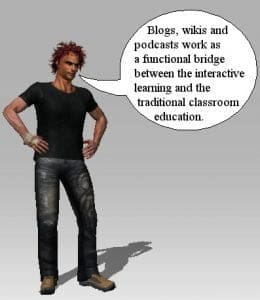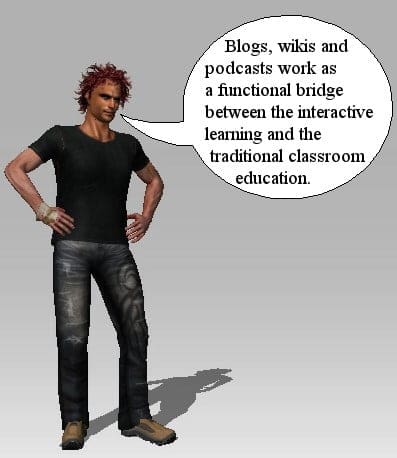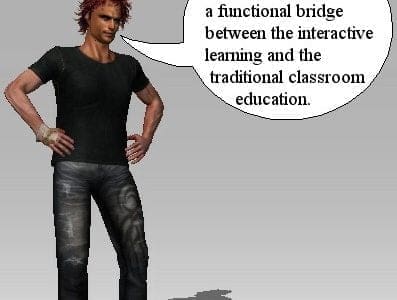 Blogs, wikis and podcasts work as a
Blogs, wikis and podcasts work as a![]() functional bridge between the interactive learning and the traditional classroom education. Present homework and project reports as well as building subject related knowledge-banks are some of the areas where it could be useful. At the same time as the students can comment each others work and receive comments from the teacher during process. With this background open user-centered but at the same time social tools is not just an important part for the integration between classroom education and digital learning but also for the development of online-based learning. This article will focus on teaching and learning with these new media.
functional bridge between the interactive learning and the traditional classroom education. Present homework and project reports as well as building subject related knowledge-banks are some of the areas where it could be useful. At the same time as the students can comment each others work and receive comments from the teacher during process. With this background open user-centered but at the same time social tools is not just an important part for the integration between classroom education and digital learning but also for the development of online-based learning. This article will focus on teaching and learning with these new media.
Blog for learning
Only a decade ago very few people knew what a blog is, even fewer were blogging, today the blogosphere has grown to a global popular movement. For educational purpose the blog can be used to project related tasks. Furthermore, theme-based blogs is another educational area where blogger is building her knowledge as she is making new discoveries and reflections as well as from comments on the blog-posts. This is also a great complement to the eLearning-module’s automatic feedback-function. Other advantages for learning are that the student will have to make selections of information-sources that will be linked or quoted on the blog. Thereby the student will practice to analyse the source reliability and usefulness. The blog also works as a perfect forum to build a network of blogs that together builds a unique knowledge-bank around a specific theme.
Wiki for learning
Wikis is another, more integrated forum to build knowledge-banks. But instead of writing blog-posts and commenting the students create and continue to build and edit on the same article. The interactivity and learning is thereby integrated within the content with focus on critical review, make changes and explain the changes. This is the most collaborative new media, which Wikipedia is an excellent example of its proven power.
The second part will focus on podcast for learning as well as conclusions of using new media in learning.
Written by
LarsGöran Boström©
Opens in a new tab



